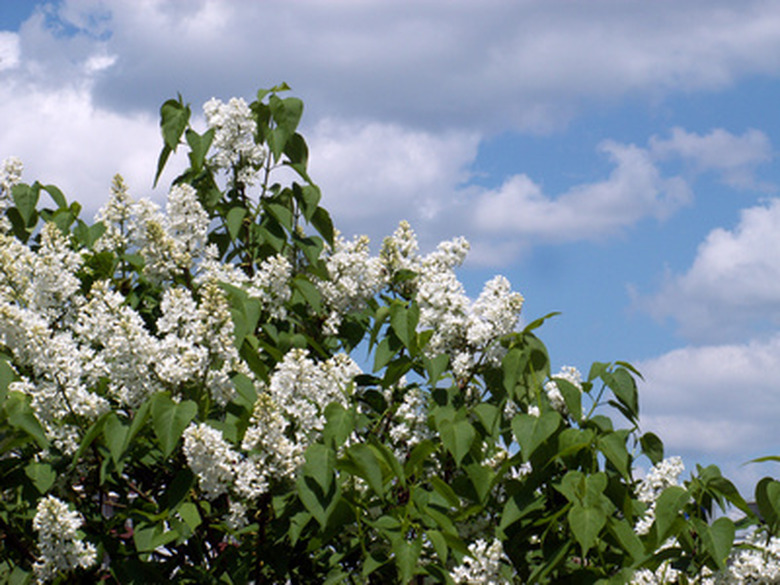Common Problems With A Japanese Lilac Tree
Japanese lilac trees (Syringa reticulata) are low-maintenance trees that emit a pleasing fragrance and are well-suited for a variety of conditions including urban areas, residential neighborhoods and drought. Common problems generally include pests and diseases like borers and fungal infections that the tree may resist if kept in good health.
Bacterial Blight
Bacterial blight, also referred to as bacterial canker, is caused by the bacterium Pseudomonas syringae pv. syringae. This is a common bacterial infection that causes health problems for the Japanese lilac tree, often attacking plants during excessively wet periods, entering through wounds or natural pores. Symptoms include brown spots on the leaves, surrounded with yellow borders; the edges of spots may overlap, forming a larger affected brown area of leaf tissue that rapidly dies. All parts of the plant may be infected, causing flowers to become brown and buds to blacken. Bacterial blight more commonly infects younger trees; more established trees are less vulnerable. For control of this problem, keep your Japanese lilac tree vigorous for better immunity against disease. Keep pruning equipment clean to prevent disease transfer and prune affected branches back below any visible signs of abnormal growths or lesions. Avoid overhead watering and apply two to three preventive copper fungicide treatments once every week to ten days when your Japanese lilac begins to produce new plant growth, according to the University of Illinois Extension.
- Japanese lilac trees (Syringa reticulata) are low-maintenance trees that emit a pleasing fragrance and are well-suited for a variety of conditions including urban areas, residential neighborhoods and drought.
Wood Rots and Decays
A common problem associated with Japanese lilac trees is incidence of wood rot and decay. Several types of fungi attack trees, forming an infection with obvious symptoms. Infected trees display growths resembling mushrooms, often in the form of shelves in two categories, either soft (flat "fruiting bodies" that project from the tree) or conks (hard brown/white bodies). Other fungal infections may produce the widely recognized puffball mushroom. Where there is fungus, a Japanese lilac tree may be experiencing interior decay within the trunk or branches though the tree appears to be reasonably healthy. Suggested control includes tree removal, according to the University of Illinois Extension.
Lilac Borer
Lilac borers (Podosesia syringae), also a pest to ash trees, attack Japanese lilac trees, causing health problems. In lilac trees, the lilac borer lays eggs that hatch, producing larvae that bore into the wood of the lilac tree. During the spring season, the larvae which have turned into adults exit the tree; adult borers are moths that resemble wasps. Their feeding, expansion within bark and creation of holes weaken the lilac tree. Symptoms include wilted stems and stems that are swollen at the base; the tree's bark may pull away from the tree. Since borers most commonly infest trees already injured or in decline, the first line of defense is keeping your tree healthy through proper care. Remove and destroy infected plant parts. For chemical control, apply the insecticide permethrin, as recommended by the Kansas State University Research and Extension.
- A common problem associated with Japanese lilac trees is incidence of wood rot and decay.
- Where there is fungus, a Japanese lilac tree may be experiencing interior decay within the trunk or branches though the tree appears to be reasonably healthy.
